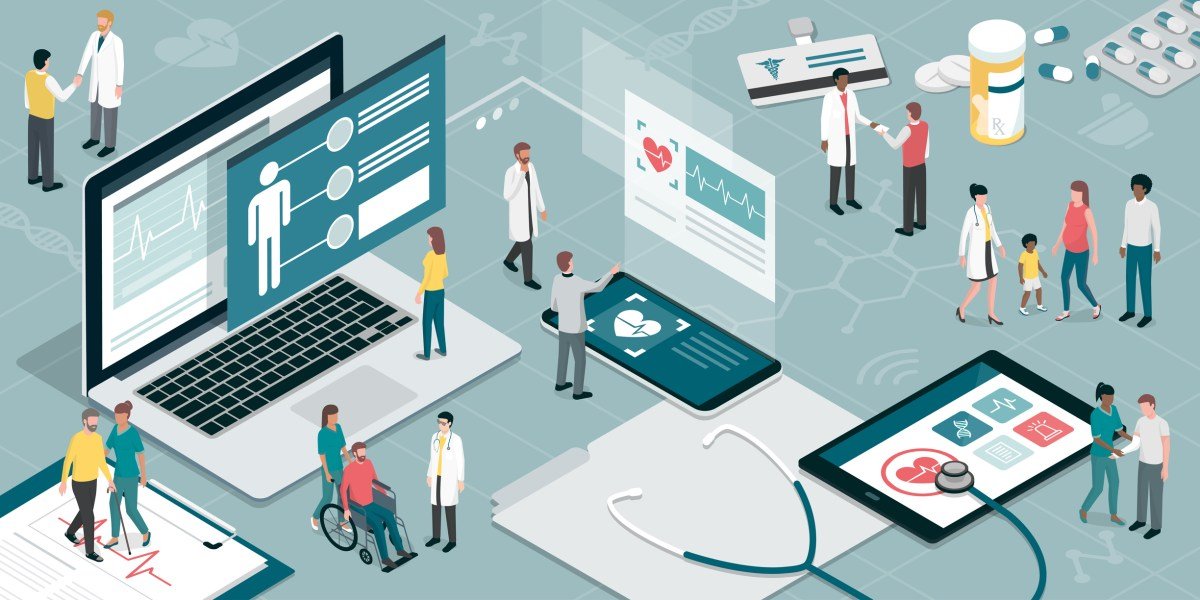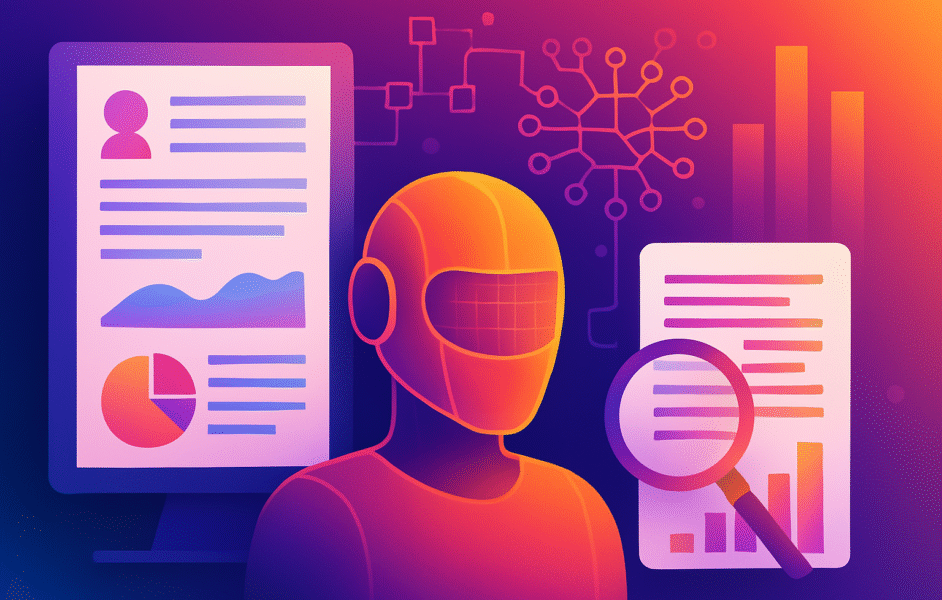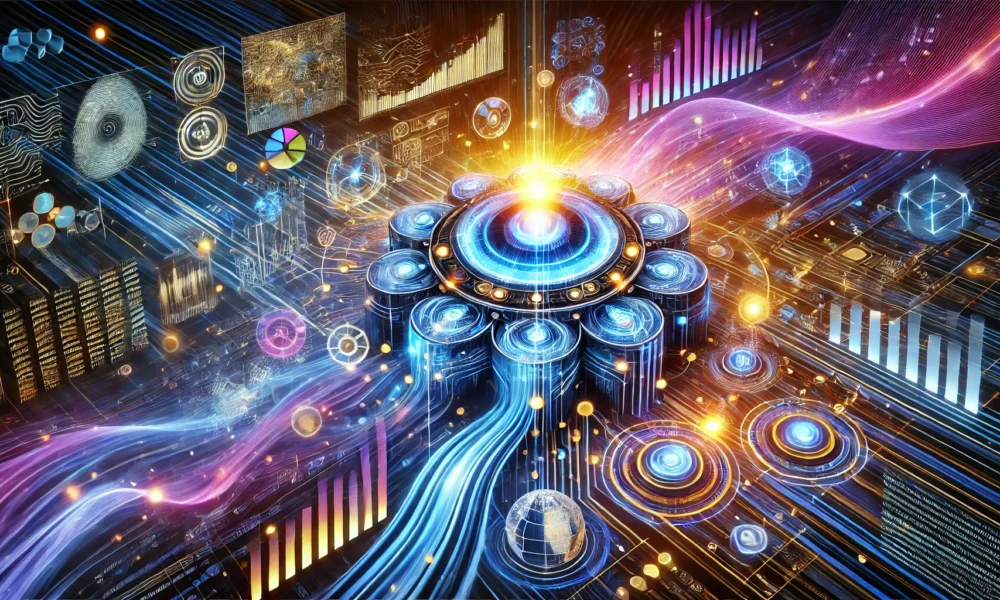Revolutionizing Document Processing: The Shift from OCR to Agentic Document Extraction
For many years, businesses have relied on Optical Character Recognition (OCR) to convert physical documents into digital formats, significantly improving data entry efficiency. However, as businesses encounter more complex workflows, the limitations of OCR are becoming increasingly apparent. This technology often struggles with unstructured layouts, handwritten text, and embedded images, failing to grasp the context and relationships within a document. These shortcomings pose significant challenges in today’s fast-paced business environment.
Enter Agentic Document Extraction, a groundbreaking advancement that employs AI technologies such as Machine Learning (ML), Natural Language Processing (NLP), and visual grounding. This innovative technology not only extracts text but also comprehensively understands the structure and context of documents. With accuracy rates exceeding 95% and processing times slashed from hours to mere minutes, Agentic Document Extraction is reshaping how businesses handle documents, providing solutions to the challenges OCR cannot address.
Why OCR is No Longer Sufficient
While OCR has been the go-to technology for digitizing documents, its limitations have become more evident as business processes evolve. One major drawback is OCR’s struggle with unstructured data. For example, in healthcare, OCR often misinterprets handwritten text in prescriptions and medical records, leading to potentially harmful errors. Agentic Document Extraction ameliorates this by accurately capturing handwritten data, ensuring seamless integration into healthcare systems and enhancing patient care.
In the finance sector, OCR’s inability to recognize relationships between various data points within documents can result in significant mistakes. For instance, a discrepancy may arise when data is extracted from an invoice without its connection to the corresponding purchase order. Agentic Document Extraction overcomes this hurdle by understanding document contexts, enabling it to identify these relationships and flag inconsistencies in real-time, ultimately preventing costly errors and potential fraud.
OCR also faces challenges with documents requiring manual validation, often leading to time-consuming corrections. In legal contexts, OCR may misinterpret legal terminology or overlook annotations, necessitating attorney intervention. Agentic Document Extraction eliminates this requirement, offering precise interpretations of legal language while maintaining the document’s original structure, making it a more reliable tool for legal professionals.
A standout feature of Agentic Document Extraction is its utilization of advanced AI that surpasses mere text recognition. It comprehends the document’s layout and context, accurately preserving tables, forms, and flowcharts during data extraction. This capability is particularly advantageous in sectors like e-commerce, where product catalogs often present diverse layouts. Agentic Document Extraction efficiently processes these intricate formats, capturing essential product details like names, prices, and descriptions while ensuring proper alignment.
Another key aspect is its implementation of visual grounding, which identifies the exact locations of data within documents. For instance, when processing an invoice, the system not only extracts the invoice number but highlights its position on the page, ensuring accurate contextual data capture. This feature is especially valuable in logistics, where large volumes of shipping invoices and customs documents are handled. Agentic Document Extraction enhances accuracy by capturing critical information such as tracking numbers and delivery addresses, minimizing errors and boosting efficiency.
Lastly, Agentic Document Extraction’s adaptability to new document formats represents a significant advantage over OCR. While traditional OCR systems often require manual reprogramming to accommodate new document types, Agentic Document Extraction learns from each new document it processes. This flexibility is particularly beneficial in insurance, where claim forms and policy documents differ from one insurer to another. It can rapidly process a variety of document formats without necessitating system adjustments, making it highly scalable and efficient for businesses managing diverse document types.
Understanding the Technology Behind Agentic Document Extraction
Agentic Document Extraction combines cutting-edge technologies to address the constraints of conventional OCR, offering a more robust means of processing and interpreting documents. It leverages deep learning, NLP, spatial computing, and system integration to accurately and efficiently extract meaningful data.
At its core, Agentic Document Extraction comprises deep learning models trained on extensive datasets derived from both structured and unstructured documents. These models utilize Convolutional Neural Networks (CNNs) to analyze document images, detecting critical components like text, tables, and signatures at the pixel level. Architectures like ResNet-50 and EfficientNet enhance the system’s ability to identify important document features.
Additionally, Agentic Document Extraction employs transformer-based models such as LayoutLM and DocFormer, which merge visual, textual, and positional information to grasp how various elements in a document relate. For example, it can connect a table header to the relevant data it represents. An extraordinary feature of Agentic Document Extraction is its few-shot learning capability, allowing the system to adapt to new document types with minimal data, thus expediting deployment in specialized contexts.
The NLP features of Agentic Document Extraction extend beyond basic text extraction. It employs advanced Named Entity Recognition (NER) models, such as BERT, to identify vital data points like invoice numbers or medical codes. Furthermore, it can resolve ambiguous terms within documents, linking them to accurate references, even in unclear text. This precision is especially critical in domains like healthcare or finance, where accuracy is paramount. For instance, in financial documents, Agentic Document Extraction can reliably connect fields like “total_amount” with corresponding line items, ensuring consistency in calculations.
Another vital aspect is its use of spatial computing. Unlike OCR, which processes documents as linear text sequences, Agentic Document Extraction perceives them as structured 2D layouts. It employs computer vision technologies such as OpenCV and Mask R-CNN to detect tables, forms, and multi-column text, significantly enhancing traditional OCR accuracy by rectifying issues like misaligned perspectives and overlapping text.
It also incorporates Graph Neural Networks (GNNs) to comprehend the spatial relationships between elements in a document, such as associating a “total” value positioned below a table. This spatial reasoning preserves the document structure, which is essential for tasks like financial reconciliation, and it records extracted data with coordinates for transparency and traceability back to the original document.
For companies aiming to incorporate Agentic Document Extraction into their workflows, the system offers comprehensive end-to-end automation. Documents can be ingested through REST APIs or email parsers and stored in cloud systems like AWS S3. Following ingestion, microservices, managed via platforms like Kubernetes, process the data using OCR, NLP, and validation modules concurrently. Validation is executed through both rule-based checks (e.g., matching invoice totals) and machine learning algorithms that identify anomalous data. After extraction and validation, the data synchronizes with other business tools such as ERP systems (SAP, NetSuite) or databases (PostgreSQL), ensuring its immediate availability for use.
By merging these technologies, Agentic Document Extraction converts static documents into dynamic, actionable data. It transcends the limitations of traditional OCR, providing businesses with a smarter, faster, and more accurate document processing solution. This advancement is invaluable across industries, promoting greater efficiency and new automation opportunities.
5 Key Advantages of Agentic Document Extraction Over OCR
While OCR is effective for basic document scanning, Agentic Document Extraction surpasses it in several crucial areas, making it an ideal choice for businesses aiming to enhance document processing and accuracy. Here’s how it shines:
1. Superior Accuracy in Complex Documents
Agentic Document Extraction excels at processing intricate documents, such as those containing tables, charts, and handwritten signatures, outperforming OCR by reducing errors by up to 70%. This capability is vital in industries like healthcare, where documents often include handwritten notes and complex layouts. For example, medical records featuring various handwriting styles, tables, and images can be accurately processed, ensuring critical information like patient diagnoses and histories are captured correctly—an area where OCR frequently falls short.
2. Context-Aware Insights
Unlike OCR, which merely extracts text, Agentic Document Extraction offers an analytical approach that evaluates context and interrelationships within documents. For instance, in banking, it can automatically flag unusual transactions while processing account statements, enhancing fraud detection efficiency. By grasping the relationships between different data points, Agentic Document Extraction allows businesses to make quicker, more informed decisions, delivering a level of intelligence beyond traditional OCR capabilities.
3. Touchless Automation
OCR often necessitates manual validation to rectify errors, hindering workflow efficiency. In contrast, Agentic Document Extraction automates this process through validation rules, such as ensuring invoice totals match line item amounts. This promotes efficient touchless processing; for example, in retail, invoices can be validated automatically, ensuring accuracy and saving significant time by eliminating human intervention.
4. Scalability
Traditional OCR systems encounter challenges when handling large volumes of documents, especially those with varying formats. Agentic Document Extraction, however, scales effortlessly to manage thousands—even millions—of documents daily. This adaptability is particularly beneficial in fast-changing sectors, such as e-commerce, where product catalogs constantly evolve, and in healthcare, where extensive patient records need digitizing. Agentic Document Extraction ensures even high-volume, diverse documents are processed efficiently.
5. Future-Proof Integration
Agentic Document Extraction integrates seamlessly with other tools, facilitating real-time data sharing across platforms. This capability is especially advantageous in dynamic industries like logistics, where quick access to shipping updates is essential. By interlinking with various systems, Agentic Document Extraction guarantees that vital data flows accurately and punctually, enhancing overall operational efficiency.
Challenges and Considerations in Implementing Agentic Document Extraction
Though Agentic Document Extraction is revolutionizing document management, businesses must consider several factors before implementation. One challenge is dealing with low-quality documents, such as blurry scans or damaged text. Even cutting-edge AI may struggle with extracting data from faded or distorted content, which is often a concern in sectors like healthcare where old or handwritten records are prevalent. However, advances in image preprocessing tools, including deskewing and binarization, are addressing these challenges. Utilizing tools like OpenCV and Tesseract OCR can enhance the quality of scanned documents, significantly improving accuracy.
Another important factor is the balance between cost and returns. The initial investment in Agentic Document Extraction can be steep, particularly for smaller businesses. However, the long-term advantages are considerable. Companies leveraging Agentic Document Extraction typically experience processing time reductions of 60-85% and error rates dropping by 30-50%. Many see a return on investment in a mere 6 to 12 months. As technology progresses, cloud-based Agentic Document Extraction solutions are becoming more cost-effective, with flexible pricing models catering to small and medium-sized enterprises.
Looking toward the future, Agentic Document Extraction is rapidly evolving. New capabilities, such as predictive extraction, enable systems to preemptively assess data needs. For instance, it can automatically extract customer addresses from recurring invoices or pinpoint important contract dates. The integration of generative AI now allows Agentic Document Extraction not only to extract data but also to produce summaries and populate CRM systems with actionable insights.
For businesses considering the adoption of Agentic Document Extraction, it’s crucial to seek solutions that provide customized validation rules and transparent audit trails. This ensures compliance and trust throughout the extraction process.
The Bottom Line
In summary, Agentic Document Extraction is reshaping document processing by making it more accurate, faster, and better at data management compared to traditional OCR. While it presents challenges such as managing subpar inputs and initial investment costs, the long-term benefits—like enhanced efficiency and reduced error rates—position it as a vital asset for businesses.
As technological advancements continue, the future of document processing shines brightly with innovations like predictive extraction and generative AI. Enterprises adopting Agentic Document Extraction can look forward to significant improvements in managing crucial documents, fostering heightened productivity and success.
Sure! Here are five FAQs about why agentic document extraction is replacing OCR for smarter document automation:





